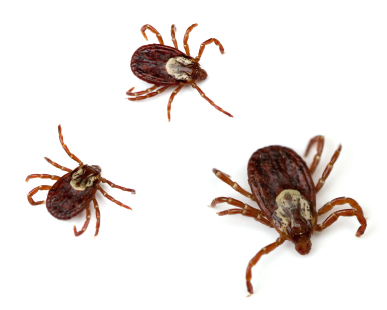
Lyme disease affects dogs, cats, people, horses, birds, cattle, and wild animals. Although it affects a large group of animals, clinical signs are often observed only in dogs and humans. In dogs, the most pronounced symptoms of Lyme disease are sore joints, a stiff gait, and lameness. The lameness is not always pronounced and often shifts from one leg to the other.
Although Lyme disease has been diagnosed in people in all 50 states, more than 80% of human cases have occurred in the eastern states from Massachusetts to Virginia. The disease was named after Lyme, Connecticut, where the first human cases occurred in 1975.
Lyme disease is caused by a bacteria-like organism called Borrelia burgdorferi. This organism is transmitted to animals by the deer tick, Ixodes dammini. Borrelia burgdorferi is difficult to isolate from clinically affected animals, however it can be isolated from these ticks.
The white-tailed deer and white-footed mouse are involved in transmission of the disease. The adult tick attaches to the deer and feeds on its blood. These adult ticks drop off the deer and lay eggs. The eggs hatch, larva and nymphs (young ticks) emerge, and these young ticks attach to mice. Since the white-footed mouse is the main reservoir of the disease, the young ticks become infected with the Borrelia organism.


